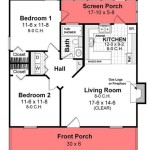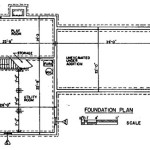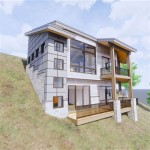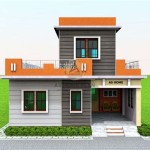Tiny house floor plans are detailed diagrams that provide a blueprint for the layout and design of tiny houses, which are typically defined as dwellings with a floor area of 400 square feet or less. These plans include the arrangement of rooms, fixtures, and other features within the limited space available.
One common application of tiny house floor plans is in the creation of custom-designed homes that cater to specific needs and preferences. For instance, a tiny house floor plan might include a loft bedroom, a compact kitchen, and a bathroom with a composting toilet, all within a space that measures approximately 20 feet by 8 feet.
In the following sections, we will delve deeper into the key considerations and elements that go into the design of efficient and functional tiny house floor plans, exploring various design strategies and providing guidance on optimizing space utilization.
When designing tiny house floor plans, several key considerations come into play to ensure optimal space utilization and functionality.
- Maximize vertical space
- Prioritize multi-functionality
- Incorporate storage solutions
- Consider natural lighting
- Optimize traffic flow
- Plan for future expansion
- Choose eco-friendly materials
- Consider accessibility needs
By carefully addressing these factors, tiny house floor plans can be crafted to create comfortable and efficient living spaces within a compact footprint.
Maximize vertical space
In tiny house floor plans, maximizing vertical space is crucial for creating a sense of spaciousness and accommodating all necessary functions within a limited footprint.
- Loft sleeping areas: Building a loft for sleeping allows you to utilize the vertical space above other areas, such as the living room or kitchen, creating a dedicated and private sleeping space without sacrificing floor space.
- Vertical storage: Instead of bulky horizontal storage units, opt for vertical shelves, cabinets, and drawers to store items vertically, making the most of wall space and keeping the floor clear.
- Built-in furniture: Incorporate built-in furniture, such as benches with storage compartments or Murphy beds that fold into the wall when not in use, to save floor space and provide additional functionality.
- Utilize the height: Don’t limit yourself to standard ceiling heights. Consider raising the ceiling in certain areas, such as the living room or kitchen, to create a more open and airy feel.
By maximizing vertical space, tiny house floor plans can create the illusion of a larger living area and provide ample storage without compromising on comfort or functionality.
Prioritize multi-functionality
In tiny house floor plans, prioritizing multi-functionality is key to maximizing space utilization and creating a versatile living environment.
- Furniture with multiple uses: Choose furniture that serves multiple purposes, such as ottomans with built-in storage, sofa beds that convert into sleeping areas, or tables that can be used for dining, working, or storage.
- Convertible spaces: Design spaces that can be easily converted to accommodate different functions. For example, a dining table that can be folded down to create a work surface or a living room that can be transformed into a guest bedroom.
- Built-in appliances: Opt for built-in appliances, such as ovens, microwaves, and refrigerators, which can be seamlessly integrated into cabinetry or under countertops, saving valuable floor space.
- Vertical storage with multiple uses: Utilize vertical storage solutions that offer multiple functions. For instance, shelves can be used for both storage and display, while pegboards can accommodate hooks for hanging items and shelves for storing small objects.
By prioritizing multi-functionality, tiny house floor plans can create spaces that are both compact and adaptable, allowing residents to live comfortably and efficiently within a limited footprint.
Incorporate storage solutions
In tiny house floor plans, incorporating clever and space-saving storage solutions is essential to maintain a clutter-free and organized living environment. Every nook and cranny can be utilized to store items, ensuring that everything has a designated place and is easily accessible.
Built-in storage: Maximize space by incorporating built-in storage solutions, such as drawers under beds, cabinets above windows, and shelves within walls. These built-in elements blend seamlessly into the design, providing ample storage without taking up valuable floor space.
Vertical storage: Make the most of vertical space by installing vertical storage units, such as tall bookshelves, hanging organizers, and pegboards. These vertical solutions allow for efficient storage of items that would otherwise clutter countertops or floors.
Multi-purpose furniture: Choose furniture that serves multiple purposes and offers additional storage. Ottomans with built-in storage compartments, coffee tables with drawers, and beds with drawers or trundle beds are excellent options for maximizing storage capacity.
By incorporating these storage solutions, tiny house floor plans can create functional and clutter-free living spaces, ensuring that every item has a designated place and is easily accessible.
Consider natural lighting
In tiny house floor plans, incorporating natural lighting is crucial for creating a bright, airy, and comfortable living environment. Natural light not only reduces the need for artificial lighting, saving energy, but also provides numerous health benefits, including improved mood and increased vitamin D absorption.
- Maximize window space: Incorporate ample windows throughout the tiny house to allow for maximum natural light penetration. Consider installing large windows in common areas, such as the living room and kitchen, to create a more spacious and inviting atmosphere.
- Utilize skylights: Skylights are a great way to bring natural light into areas that may not have access to windows, such as bathrooms or hallways. They can also provide a dramatic architectural element, adding a touch of style to the tiny house.
- Choose light-colored finishes: Opt for light-colored walls, ceilings, and flooring to reflect natural light and create a brighter interior. Dark colors absorb light, making the space feel smaller and less inviting.
- Avoid obstructing windows: When placing furniture or other objects, be mindful not to block windows and obstruct natural light. Allow for open sightlines to windows to maximize light distribution throughout the tiny house.
By considering natural lighting in tiny house floor plans, you can create a healthier, more comfortable, and visually appealing living space that takes full advantage of natural resources.
Optimize traffic flow
In tiny house floor plans, optimizing traffic flow is essential for creating a comfortable and functional living environment. A well-thought-out layout ensures that residents can move around the tiny house easily and safely, without feeling cramped or obstructed.
Create a central hub: Designate a central area in the tiny house, such as the living room or kitchen, as the main gathering and circulation space. This central hub should connect to all other areas of the house, allowing for easy movement and access to different functions.
Minimize hallways and corridors: Hallways and corridors can take up valuable space in a tiny house. Instead, opt for open floor plans that seamlessly connect different areas without the need for separate passageways. This creates a more spacious feel and improves traffic flow.
Use sliding doors and pocket doors: Sliding doors and pocket doors are space-saving alternatives to traditional hinged doors. They slide open and close without taking up additional floor space, making them ideal for small spaces and areas with limited clearance.
By optimizing traffic flow in tiny house floor plans, you can create a more comfortable and functional living space that allows for easy and efficient movement throughout the house.
Plan for future expansion
In tiny house floor plans, considering future expansion is essential for those who anticipate their needs or family size may change over time. By incorporating design elements that allow for future expansion, tiny house dwellers can avoid costly renovations or the need to move to a larger home in the future.
- Modular design: Design the tiny house using a modular approach, where individual sections or rooms can be added or removed as needed. This allows for flexibility and the ability to expand the tiny house incrementally in the future.
- Expandable floor plan: Create a floor plan that can be easily expanded by adding additional rooms or extending existing ones. For example, a loft area could be designed to accommodate a future bedroom or a living room could be extended to create a larger gathering space.
- Multi-purpose spaces: Incorporate multi-purpose spaces that can be adapted to different uses as needs change. For example, a guest room could also serve as a home office or a playroom.
- Utilize outdoor space: Consider utilizing outdoor space for future expansion. A deck or patio could be designed to accommodate an outdoor living area or a small addition to the tiny house.
By planning for future expansion in tiny house floor plans, residents can create a home that can adapt and grow alongside their changing needs, ensuring long-term comfort and functionality.
Choose eco-friendly materials
In tiny house floor plans, choosing eco-friendly materials is essential for creating a sustainable and healthy living environment. By incorporating materials that minimize environmental impact and promote well-being, tiny house dwellers can contribute to a greener future while enhancing their own living experience.
- Sustainable: Opt for sustainable, such as FSC-certified wood, which is harvested from responsibly managed forests. Sustainable ensures that the wood used in the tiny house comes from renewable sources and minimizes deforestation.
- Recycled materials: Incorporate recycled materials, such as reclaimed wood, metal, and glass, into the tiny house floor plan. These materials not only reduce waste but also add character and uniqueness to the tiny house.
- Low-VOC materials: Choose low-VOC (volatile organic compound) materials for finishes, such as paints, sealants, and adhesives. Low-VOC materials minimize the release of harmful chemicals into the indoor air, creating a healthier environment for occupants.
- Natural insulation: Utilize natural insulation materials, such as cellulose,, and cork, to insulate the tiny house. Natural insulation materials are biodegradable, renewable, and provide excellent thermal performance.
By choosing eco-friendly materials in tiny house floor plans, residents can create a sustainable and healthy living space that minimizes their environmental footprint while maximizing their well-being.
Consider accessibility needs
In tiny house floor plans, considering accessibility needs is essential for creating an inclusive and comfortable living environment for all. By incorporating design elements that enhance accessibility, tiny house dwellers can ensure that their home is safe, functional, and enjoyable for people of all abilities.
- Universal design principles: Apply universal design principles to the tiny house floor plan to make it accessible to individuals with diverse abilities. This includes features such as wider doorways, lever handles, and accessible showers.
- Single-level living: Opt for a single-level floor plan to eliminate the need for stairs or elevators, making it easier for individuals with mobility impairments to navigate the tiny house.
- Accessible kitchen and bathroom: Design the kitchen and bathroom with accessibility in mind. This includes features such as roll-under sinks, adjustable countertops, and grab bars.
- Adequate turning space: Ensure that there is adequate turning space throughout the tiny house, especially in areas such as the kitchen, bathroom, and bedroom. This allows individuals using wheelchairs or mobility aids to maneuver comfortably.
By considering accessibility needs in tiny house floor plans, residents can create a home that is welcoming, safe, and functional for everyone, regardless of their abilities.










Related Posts








